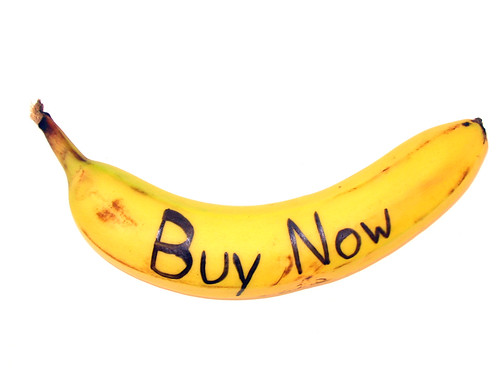Important Notice: The following article is a tad long but it’s worth your time. It does not matter whether you run a store part-time or if you do it full-time, it will still benefit you. Even if you are not an InstanteStore merchant, the information and resource links contained in this article will help put you on the right track to running a successful online store.
“How do I get the SEO Wizard to give me the GREEN thumbs up?”
– InstanteStore Merchant
This is the most common question we get when it comes to the SEO Wizard. But before we answer this question, we shall take a look at the purpose of the SEO Wizard.
What Is The SEO Wizard?
The SEO Wizard is a GUIDE to help you optimize your pages for search engines via the use of SELECTED KEYWORDS. Once you are RANKED on the FIRST PAGE for KEYWORDS with a GOOD AMOUNT of SEARCH TRAFFIC, you will start to experience an increase in sales (provided you’ve done your homework on converting visitors to customers).
The following are links to MUST READ articles on how to improve Conversion Rates for your store:
Online Shopping Cart Checkout Website Design For Effortless Shopping
Use Colors To Create ‘Sticky’ Landing Pages
Free Online Shopping Cart Tip: Don’t Neglect Customer Experience
Retain Customers with Reward Points Shopping Cart Service
Online Shopping Cart Software Solution for Abandoned Carts
Start An Online Store Business Tip – Test Your Site
Before You Use The SEO Wizard
You MUST carry out KEYWORD RESEARCH BEFORE you use the SEO Wizard. There is no point optimizing your page for keywords no one searches for or targeting keywords that are too competitive or too generic, you will probably never get ranked for those.
How To Select Keywords
You can use the Google Adwords Keyword Tool when doing keyword research. It’s Free. Shortlist keywords that have a healthy amount of search traffic but do not have too much competition. The key is to use long tail keywords as opposed to generic 1 or 2 word keywords.
Warning: Never try to trick Google by using keywords that have high search value with very little competition (so it’s easy to rank) but have little relevance to the product you are selling. For example, using a keyword meant for Nike shoes when your store sells Adidas.
Many merchants do this in the hopes that the visitor will land on their site, not find what they are looking for but instead, consider buying the product that is displayed before them. The truth is, most visitors bounce right off a site if they do not find what they are looking for. When Google notices a high bounce rate for a particular keyword leading to a site, it will regard that keyword match as inaccurate and the site will lose authority (will not rank high) for that keyword.
Here’s an example of keyword research being done for Saucony products (this is NOT an endorsement):

You will notice that the keyword “Saucony Shoes” receives 40,000 over searches a month while the other two get over 1,000 searches.

However, a Google search for “Saucony Shoes” garners almost 4 million results. That’s too much competition.

Whereas “Saucony Fastwitch 4” has only 24,000 plus competing pages.

Here’s a tip: if you put the keyword in quotes, you get the results for sites using the exact keyword. This means just less than 5,000 sites use “Saucony Fastwitch 4” exactly. If those competing sites on the first page aren’t strong (Google looks at over 200 factors to define “strong”), it would probably take about 2 to 3 months to break into the top 10 with proper SEO work using that exact keyword. Mind you, this is just an example.
The following are links to MUST READ articles on SEO, Keyword Research and Keyword Selection:
An Overview of Key SEO Methods
Keyword Research – How to Pick Good Keywords
How To Use Keywords Effectively: Part 1
How To Use Keywords Effectively: Part 2
Avoid Keyword Stuffing or Spamming
Get Ranked Quickly – Target Long Tail Keywords
Shopping Cart Help: When To Stop Working On A Keyword
How Much Search Traffic Should I Target?
Naturally, the more search traffic, the better. If you are targeting a very niche market, even 50 searches a month for a particular keyword will suffice. This is because if your site makes it to the top 10 of a search engine’s results page (SERP), chances are that most of those 50 people using that search term will probably visit your site.
For sites selling more general products, a few hundred searches a month may very well be good enough. Pick the low hanging fruits first and target less competitive keywords for starters. Get some traffic coming in and see if you are successful at converting them before you get more adventurous.
How Long Until My Site Starts To Rank?
If you have done both your on page and off page SEO work properly and adequately, you should start to rank for your targeted keywords in as few as 3 months, sometimes even sooner. But generally speaking, it probably takes about 6 months to a year for a keyword to rank well.
Note: InstanteStore does offer SEO services but it is currently only open to our merchants for the time being (though we are looking to offer SEO services to all comers at some point in the near future). There is a waiting list at the moment so please be patient if you do request the service. Pricing is currently on a case-by-case basis. The service runs over at least a 6 month period. The exact pricing will depend on how much work needs to be done, the complexity of the work involved and the level of competition for the keywords to be ranked.
Content And Building Links
Google likes older sites and sites that it thinks have good content and useful links. Although most of your effort should be put into building inbound links (links pointing to pages on your site from Forums, Blogs, Article Directories), do not be afraid to create outbound links to relevant and useful resource sites that you think might help your customers. This will add value to your site.
For example, if you are selling slimming products, you might want to link to neutral informative sites that contain BMI calculators and other beneficial tools. Google will reward a site if it sees relevance in its links (inbound and outbound). Speaking of links, make sure you remove any broken links. Google does not like that.
Now Will You Tell Us How To Get That Elusive Green Thumbs Up?
There’s just one more thing you need to know before we get to that. There are only so many appropriate keywords to go around for a particular product type so it’s virtually impossible to promote every single product on your store with those keywords.
Although you can share the same keywords among similar products, pages, or categories, you still have to choose a product or category page per set of keywords to promote or build inbound links to. Remember to never build inbound links using the same keyword (text link) to different product pages or categories.
How To Get The Green Thumbs Up
Note: The SEO Wizard is only a guide. It’s meant to give you an indication of how much you’re using (or not using) your keywords in your content. You DO NOT have to get a green thumbs up for every page. Just try to get them on the pages you are actively promoting. Please do not lose sleep over it.
Keywords
Now that you’ve done your keyword research and got your set of keywords, fill them in the keyword text boxes:

If you are using the new Add Product Interface, the Search Engine Meta Keywords text box will be automatically populated with those keywords. You may include additional keywords here but not so many that it reduces the keyword density for your main keywords.
 Body Section
Body Section
Next, populate the Body section of your product page. The Body section is made up of the Product Name, Product Headline, Product Description, Product Notes, Top Section Description, and Bottom Section Description fields. Concentrate on the ones in RED. Try to use the primary keyword at least 3 times in the Product Description section.
Tip: Please do not make the Product Description too long as this will make it harder to meet the keyword density requirement. Keep the content between 150 and 200 words.
Also, never copy content from another site or from another page on your site and paste it to another page on your site. Google will regard this as duplicate content and will penalize your site for it. Pages considered having duplicate content will be placed in a supplementary index, which is a fancy way of saying they’ll (most likely) never be found.
If you have products with different options (size, color), use the product options feature. Try not to create new pages for each option, if possible. Usually, the content on option pages is repeated and Google will regard them as duplicate content.
Lastly, we look at the use or misuse of HTML header tags (H1, H2, H3). Header or Title Tags are used to tell search engine crawlers what a section of content is about.

Only use the Header tags for section headings. For example, if your Product Page main header is Adidas Adizero Adios, use the H1 tag for it. The sub headings could be Adidas Adizero Adios Features and Adidas Adizero Adios Benefits, use the H2 tag for that. Use the H3 tag and below for minor headings. It does not really matter if certain built-in elements of the page template breaks the ‘hierarchy’ of the Title Tags so don’t get worked up on this. Just keep in mind that Google uses all this little bits of info to understand what the page is all about. So you should work towards that end.

Also, do not use it as a means to enlarge (sections of) text. Use the Text Size tool if you want to increase text size.

HTML Title
Next, fill in the HTML Title text box. Make sure it contains your primary keyword.
 Search Engine Meta Description
Search Engine Meta Description
Then go on to complete the Search Engine Meta Description. This part is important as Search Engines sometimes use this to describe your page. More importantly, users read this before deciding whether to click on your link when it appears on a results page. Think of it as a lure or an invite. It’s important that your Search Engine Meta Description be relevant to your keywords and it should accurately describe the page content.
Tip: Make sure that the text includes your primary keyword and does not exceed 150 characters. NEVER COPY content from the Search Engine Meta Keywords text box and paste it here. Every page should have a unique search engine description so Google can tell the difference between pages.

For those of you who have not seen a Green Thumbs Up before and think that it’s a myth, this is what it looks like:

All this information may seem overwhelming at first, so take it in your stride. Most of our merchants start off with one store but quite a number of them now have multiple stores with us.
What makes a successful web store owner? 3 characteristics – Good Planning, Patience and Perseverance.
Although you could start to see revenue within 6 months, most businesses really take off only after the first year. So you have to think like a business owner and plan for the long term.
Good luck!



















